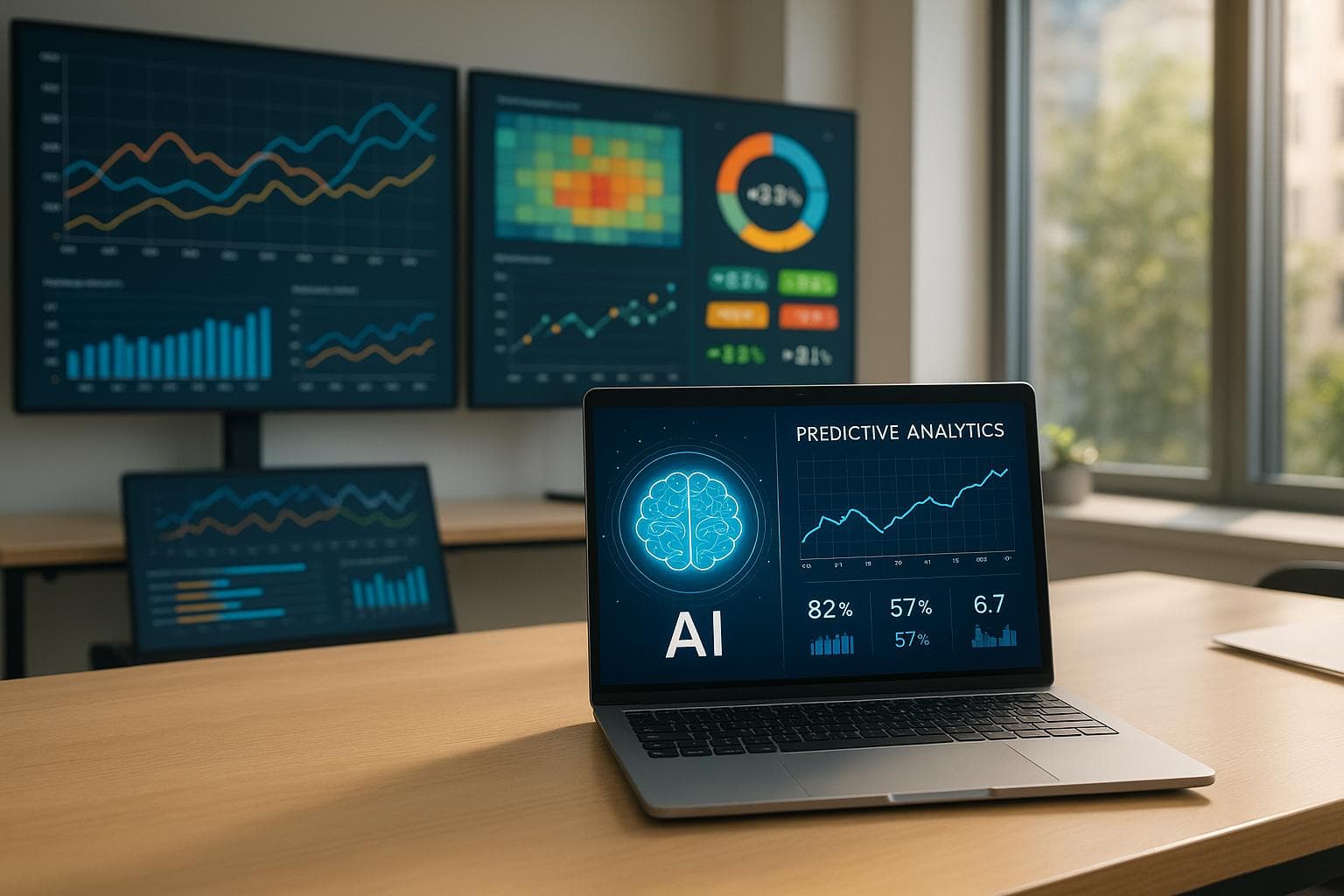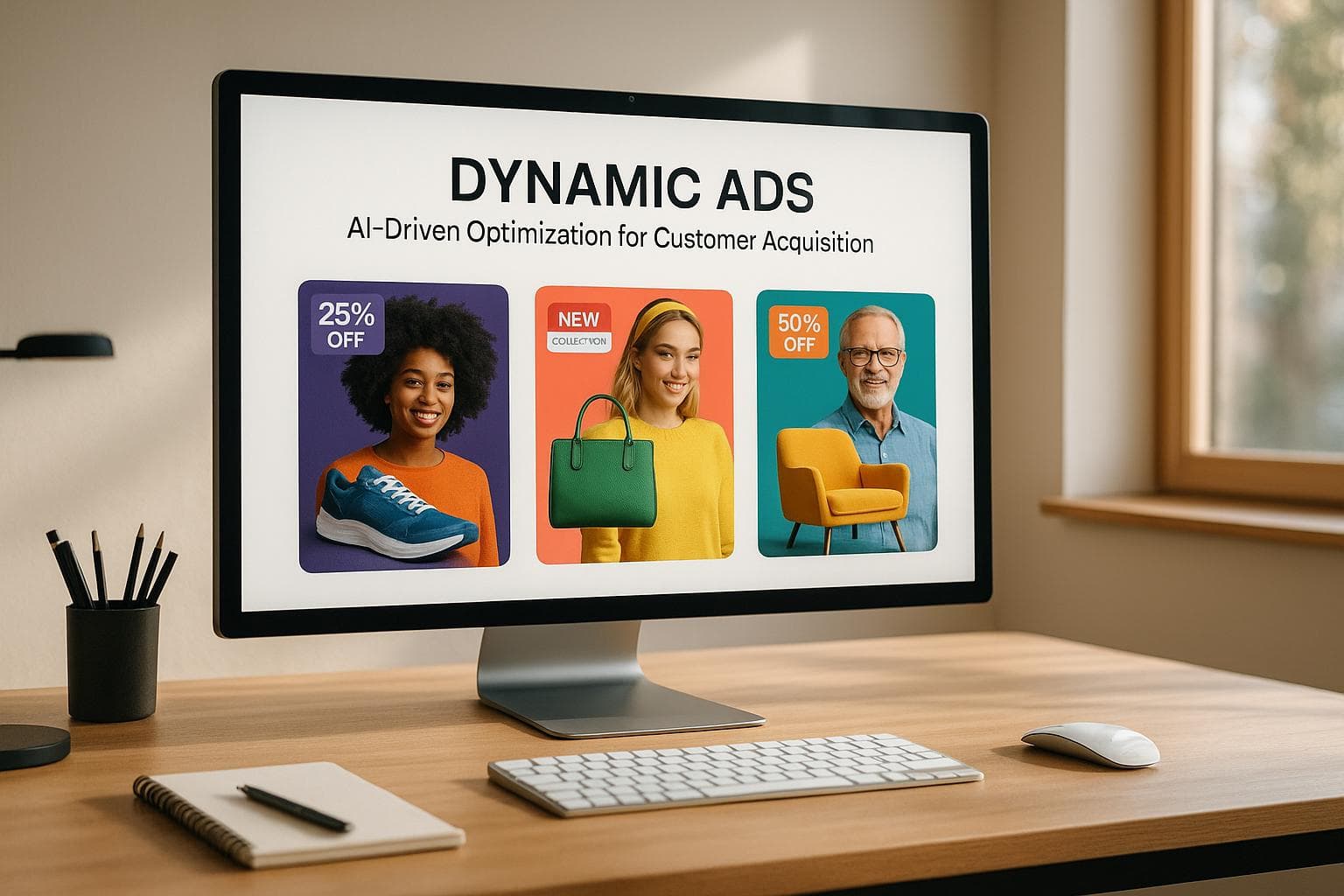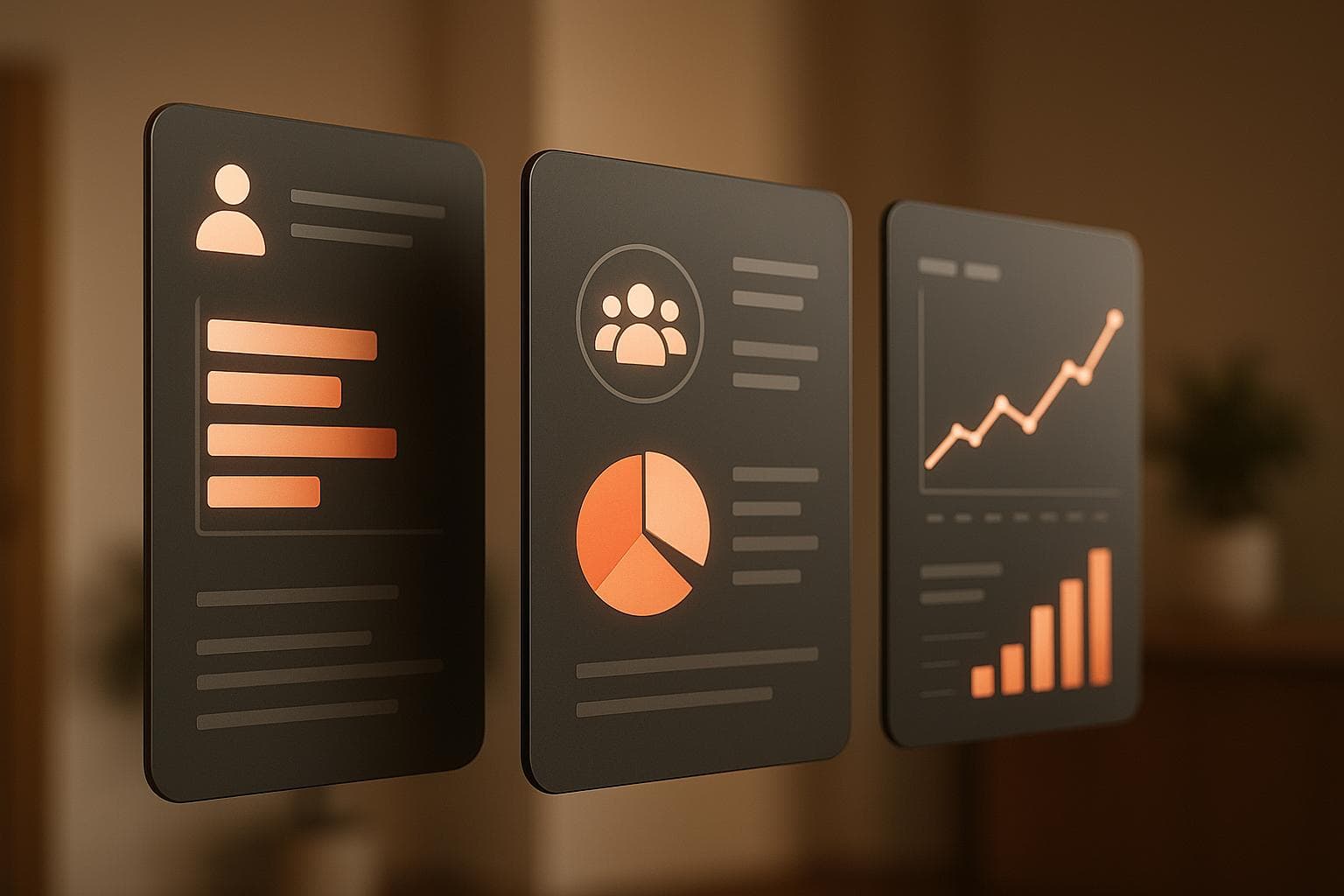Google Ads vs Facebook Ads: Which Works Best for Ecommerce?
Explore the strengths of Google Ads and Facebook Ads for e-commerce, and learn how to combine them for optimal sales results.
Looking to boost your e-commerce sales but unsure whether to invest in Google Ads or Facebook Ads? Here’s the quick answer:
Google Ads is ideal for targeting customers actively searching for products, offering higher conversion rates (average 3.75% for search ads).
Facebook Ads excels at building awareness and engaging users based on their interests, with a higher average conversion rate of 9.21%.
Key Differences at a Glance:
| Aspect | Google Ads | Facebook Ads |
|---|---|---|
| Audience Behavior | Actively searching for products | Passively browsing |
| Best Use | Driving immediate purchases | Building brand awareness |
| Ad Formats | Search, Shopping, Dynamic Ads | Carousel, Video, Dynamic Ads |
| Average CPC | $2.69 (Search), $0.63 (Display) | $0.58 |
| Conversion Rate | 3.75% (Search), 0.77% (Display) | 9.21% |
Quick Takeaway:
Use Google Ads for high-intent buyers and Facebook Ads to connect with a broader audience. Combining both platforms often delivers the best results by addressing the entire customer journey.
Facebook Ads vs. Google Ads (For Ecommerce Brands)
Audience Targeting Methods
Google Ads and Facebook Ads take distinct approaches to connecting with potential e-commerce customers, each offering unique strengths depending on your goals.
Google Ads: Search Intent Focus
Google Ads is a powerhouse for capturing users with strong purchase intent, thanks to its search network that processes over 5.6 billion daily searches [1]. Its targeting revolves around:
Keyword targeting: Ads appear when users actively search for specific products or services.
Search intent signals: Pinpoints users who are ready to make purchasing decisions.
Commercial keywords: Focuses on phrases that suggest a clear buying intention.
"If high intent exists, Google Ads would be my first port of call and should be a priority." [1]
Now let’s look at how Facebook takes a different route by focusing on user characteristics and behaviors.
Facebook Ads: Interest-Based Focus
Facebook taps into its massive user base of 3.06 billion monthly active users [6] to target audiences based on their personal traits and activities. Its targeting options include:
| Targeting Category | Examples of Options |
|---|---|
| Demographics | Age, gender, location, income level |
| Interests | Hobbies, entertainment, shopping habits |
| Behaviors | Purchase history, device usage, travel patterns |
| Connections | Page followers, event responses, app users |
While Google Ads thrives on search intent, Facebook shines by leveraging user profiles and interests, making it an excellent tool for building awareness and engaging potential customers.
Retargeting Options
Both platforms offer robust retargeting tools, but their methods differ significantly:
Google Remarketing:
Extends reach across Google's Display Network, which covers 90% of internet users [4].
Can boost conversion rates by up to 161% [3].
Tracks users across Google services like Search, Maps, and Gmail.
Facebook Retargeting:
Works within Meta's ecosystem, including Facebook, Instagram, and WhatsApp.
Drives engagement rates up by 300% compared to standard ads [4].
Uses Meta Pixel for precise tracking of user activity.
Each platform's targeting methods align with specific e-commerce objectives. Google Ads is perfect for capturing users ready to buy, while Facebook's rich targeting options are ideal for increasing brand visibility and nurturing long-term customer relationships.
Ad Format Options
Each platform has its strengths when it comes to ad formats: Google focuses on targeting users with purchase intent, while Facebook capitalizes on visually engaging its audience.
Google Ads Formats
Google Ads are designed to connect with high-intent buyers:
| Ad Format | Key Features | Best Use Case |
|---|---|---|
| Shopping Ads | Product images, prices, titles | Direct product sales |
| Search Ads | Text-based, keyword-targeted | High-intent purchases |
| Performance Max | Cross-channel automation | Broad reach campaigns |
| Dynamic Remarketing | Product-specific retargeting | Cart abandonment |
Shopping Ads, for instance, are responsible for generating 18% of ecommerce revenue [7]. These ads prominently display product details - like images and prices - right within search results, making them a powerful tool for driving conversions.
A great example of this is Yeti, which effectively uses Google's dynamic remarketing ads. By showcasing products that visitors recently viewed on their site, Yeti creates a tailored shopping experience that encourages customers to complete their purchases [7].
Facebook Ads Formats
Facebook takes a more visual approach with its ad options:
| Ad Format | Description | Conversion Impact |
|---|---|---|
| Carousel Ads | Up to 10 images/videos | Highlights multiple products |
| Collection Ads | Immersive shopping experience | Engages ready-to-buy users |
| Dynamic Product Ads | Automated retargeting | Recovers abandoned carts |
| Video Ads | Mobile-optimized content | Perfect for brand storytelling |
Facebook's emphasis on mobile advertising pays off significantly - 94% of its ad revenue comes from mobile ads [8]. On average, Facebook ads achieve an ecommerce conversion rate of 9.2% [9].
Take BANGS Shoes, for example. They use carousel ads to showcase seasonal promotions alongside multiple product options. This strategy not only grabs attention but also encourages deeper customer interaction [8].
"The beauty of dynamic ads is that this is all automated. It saves a lot of time. You can increase relevancy and ad performance, and ability to scale campaigns, getting insights so that you can optimise your campaigns." - Samantha Deese, Head of Marketing at StitcherAds [10]
Facebook's Collection Ads stand out for mobile shopping, offering brands a chance to combine video content with product catalogs. This creates an immersive experience that keeps users engaged and ready to shop.
Coming up, we'll dive into how these ad formats impact cost efficiency and conversion rates.
Cost and ROI Analysis
Grasping the cost structure of Google Ads and Facebook Ads is key to boosting e-commerce ROI. Both platforms have distinct pricing models and strengths, making them suitable for different stages of the customer journey.
Cost Metrics Comparison
Google Ads often comes with a higher cost-per-click (CPC) due to its focus on high-intent searches. Here’s a snapshot of average costs:
| Platform | Average CPC | Average CPM | Minimum Budget |
|---|---|---|---|
| Google Search Ads | $2.69 | – | No minimum |
| Google Display Ads | $0.63 | – | No minimum |
| Facebook Ads | $0.58 | $13.57 | $24.00 (7-day sales) |
For e-commerce businesses, Google Ads CPCs generally range from $1 to $3, though luxury sectors may see even higher rates. On the other hand, Facebook Ads tend to have lower CPCs, typically between $0.50 and $1.50 [5].
"Facebook's power lies in its unmatched ability to target very specific audiences based on detailed demographic and psychographic data that users willingly provide."
- Mari Smith, leading Facebook marketing expert [5]
These cost differences highlight the platforms' contrasting strengths, which directly influence conversion strategies.
Conversion Rate Data
When it comes to conversions, both platforms shine in their own ways:
| Metric | Google Ads | Facebook Ads |
|---|---|---|
| Average Conversion Rate | 3.75% (Search), 0.77% (Display) | 9.21% |
| Average Cost per Action | Varies by industry | $18.68 |
| Purchase Intent | Higher | Lower |
Google's search ads excel at driving immediate purchases, boasting a 3.75% average conversion rate across industries [12]. Meanwhile, Facebook Ads, with a 9.21% average conversion rate, are especially effective for nurturing leads through repeated interactions [11].
A combined strategy often delivers the best results. For instance, acquiring customers through Google Ads at a $2.50 CPC can attract 30% of visitors. Retargeting these individuals on Facebook can push conversion rates up by 20%, increase sales by 45%, and reduce cost per conversion by 15% [5].
Experts recommend focusing on the entire customer journey:
"Don't just focus on the bottom of the funnel. The most successful digital strategies address the entire customer journey from initial awareness all the way through loyalty and advocacy."
- Avinash Kaushik, Digital Marketing Evangelist at Google [5]
Facebook also proves its value in brand building and retargeting. It’s no surprise that 81% of businesses report being satisfied with their Facebook Ads ROI [13]. Together, these platforms complement each other - Google captures active buyers, while Facebook strengthens connections and builds long-term loyalty.
sbb-itb-0bd1697
Performance Optimization Tips
Refining ad performance is key to boosting ROI, especially when using platform-specific strategies tailored to each network's strengths. Below are effective techniques for optimizing campaigns on Google Ads and Facebook Ads.
Google Ads Best Practices
Google Ads can be a powerful driver of e-commerce revenue - accounting for up to 18% of total revenue for many businesses [7]. To make the most of your campaigns, a structured approach to campaign management and data-driven strategies is essential.
For the best results, follow this campaign sequence:
Standard Shopping Ads: Start here for broad product visibility.
Dynamic Remarketing Ads: Re-engage users who’ve shown interest.
Search Ads: Target high-intent queries.
Performance Max: Leverage automation for cross-network reach.
YouTube Ads: Build brand awareness with engaging video content.
Product feed optimization is especially important for Shopping campaigns. Focus on these areas:
| Element | Best Practice | Impact |
|---|---|---|
| Product Titles | Include brand, model, color, size | Improves relevancy |
| Images | High-resolution, multiple angles | Increases CTR |
| Descriptions | Highlight features and benefits | Boosts conversions |
| Price | Ensure competitive positioning | Affects ROAS |
"My motto: test, experiment, fail, and succeed." - Emmanuel Flossie, Diamond Product Expert, Founder of FeedArmy [14]
A real-world example comes from Inflow, where Performance Max campaigns led to a 76% increase in PPC revenue by fine-tuning product feeds and using automated bidding [17].
While Google Ads thrive on precision and structured bidding, Facebook Ads demand a more creative and audience-focused approach.
Facebook Ads Best Practices
Facebook stands out for its advanced targeting options and creative flexibility. Personalized ads on the platform can boost ad recall by up to 50% [15]. Here’s what works best:
| Strategy | Average Impact | Implementation |
|---|---|---|
| Video Ads | 30% lower CPE | Use modular hooks |
| UGC Content | 4x higher CTR | Showcase customer stories |
| Dynamic Ads | 25% higher CVR | Automate product catalogs |
| Lookalike Audiences | 70% higher CVR | Build from top customer data |
One success story comes from a women’s accessory brand that used pseudo-gallery video ads - combining lifestyle visuals with product highlights - to increase CTR by 50-60% and conversions by 20-30% [16].
To maximize results with Facebook Ads, focus on these strategies:
Advanced Audience Segmentation: Pair demographics with shopping behaviors for precise targeting.
Creative Testing: Experiment with multiple ad versions to find what resonates.
Dynamic Retargeting: Serve ads based on users’ browsing history.
Mobile Optimization: Design ads with a mobile-first mindset.
"Effective Facebook ads require a creative mix of text and visuals that inspire users to engage with the ad according to a campaign's objectives (e.g., awareness or sales). To determine what makes a Facebook ad effective, it's essential to test different strategies and scale the ones that perform best." - Jake Madoff, Verified Expert in Marketing [16]
E-commerce Platform Integration
Integrating ad platforms with e-commerce systems is key to running efficient campaigns and ensuring accurate tracking. When done right, it not only simplifies campaign management but also boosts ad performance across multiple channels.
Google Ads Connections
Google Ads connects to e-commerce platforms primarily through the Google Merchant Center, which automates product listings and streamlines campaign management. Here's how this integration benefits e-commerce businesses:
| Integration Feature | Benefit | Implementation Note |
|---|---|---|
| Automated Feed Sync | Real-time inventory updates | Requires product feed setup |
| Smart Shopping Campaigns | Quick campaign launches | Available via platform plugins |
| Conversion Tracking | Performance metrics tracking | Uses enhanced e-commerce tracking |
| Dynamic Remarketing | Automated product retargeting | Requires GTM implementation |
To get the most out of this integration, use a business-managed Google account and keep your product catalog updated regularly. This ensures secure and accurate listings [18][19].
One example of success comes from BrightBid’s case study in March 2023. By optimizing product feed management, they achieved a 30% sales increase and improved conversion rates by 20% through Google Shopping Ads. The project focused on fixing common product data issues and enabling scalable feed updates.
Now, let’s shift to Facebook, where its tools simplify catalog management and tracking.
Facebook Ads Connections
Facebook’s e-commerce integration relies on tools like the Meta Pixel and Commerce Manager, which offer powerful tracking and catalog management capabilities. Here’s a breakdown of what these tools bring to the table:
| Integration Component | Primary Function | Key Benefit |
|---|---|---|
| Meta Pixel | Tracks user behavior | Enhanced targeting |
| Conversions API | Server-side tracking | Improved data accuracy |
| Commerce Manager | Manages product catalogs | Automates feed updates |
| Instagram Shop Connection | Enables multi-platform sales | Expands audience reach |
For instance, Tentree, a sustainable clothing brand using Shopify, has successfully utilized Facebook Ads integration. By aligning its campaigns with its eco-conscious mission, Tentree not only drives sales but also builds a community of environmentally aware customers [21].
To maximize your Facebook Ads integration:
Use both the Meta Pixel and Conversions API for comprehensive tracking [20].
Follow Facebook commerce policies and automate feed updates to manage dynamic inventories effectively [20][21].
"Your product descriptions are another opportunity to reinforce your brand voice and provide valuable information to your customers."
– Steve, Expert at First Pier [23]
Facebook supports various feed formats like CSV, TSV, RSS XML, ATOM XML, and Google Sheets, allowing flexible product data management [22]. Aligning your ad platform integrations with your e-commerce infrastructure creates a strong foundation for data-driven, scalable advertising.
These integration tools not only simplify campaign management but also set the stage for selecting the right platforms for your business needs.
Platform Selection Guide
Building on earlier discussions about targeting, ad formats, and cost considerations, this guide outlines the best scenarios for each platform and how combining them can align with your business goals, target audience, and product characteristics.
Best Uses for Google Ads
Google Ads shines when it comes to capturing high-intent buyers who are actively searching for products or services. It's especially effective for businesses with established demand, solution-oriented offerings, and clear search terms.
| Business Type | Advantage | Results |
|---|---|---|
| Professional Services | High search intent | $4.22 average CPC |
| Local Retailers | Location-based targeting | $1.66 median CPC |
| B2B Products | Specific product searches | $1,069.36 median monthly spend |
Best Uses for Facebook Ads
Facebook Ads is a go-to platform for creating demand and building brand awareness. With an audience of 3.065 billion daily active users [1], it’s particularly effective for new product launches, visually-driven items, lifestyle brands, and subscription-based services.
| Product Category | Average CPC | Best For |
|---|---|---|
| Apparel & Fashion | $0.30 | Visual merchandising |
| Travel | $0.17 | Lifestyle marketing |
| Consumer Goods | $0.29 | Brand storytelling |
By leveraging these unique strengths, many businesses find that integrating Google Ads and Facebook Ads delivers better overall results.
Multi-Platform Strategy
Research shows that companies using cross-platform retargeting can see a 40% improvement in ad performance [24]. Here’s how to effectively combine both platforms:
| Strategy Component | Google Ads Role | Facebook Ads Role |
|---|---|---|
| Budget Allocation | 75% for active searchers | 25% for passive audience |
| Primary Objective | Convert high-intent traffic | Build brand awareness |
| Targeting Focus | Search intent | Demographics & interests |
"We believe using both is best, because you reach both an active and passive audience. Active searchers are hotter prospects, so we recommend using 75% of the budget for active searchers and 25% for the passive audience."
- Barry Martin, President & Creative Director at The Idea Center [1]
A great example of this strategy comes from Hakan Mücevherat, whose AI-powered remarketing campaigns on Meta achieved an 80% higher return on ad spend compared to Google Ads [24].
To get the most out of a dual-platform approach, ensure your messaging is consistent across both platforms. Adjust budget allocations based on performance data, and use unified analytics tools to track the entire customer journey. This will help you refine your campaigns and maximize their impact.
Summary
Deciding between Google Ads and Facebook Ads depends on your business goals, the type of product you offer, and your target audience. Each platform plays a different role in a well-rounded digital marketing strategy.
Google Ads is ideal for capturing high-intent buyers, boasting an average conversion rate of 4.4% across industries [5]. Its keyword-based targeting works well for businesses with products that meet an existing demand. While the cost-per-click may be higher, the strong purchase intent often leads to quicker conversions.
Facebook Ads, on the other hand, connects with over 3 billion monthly active users [2] and stands out in areas like:
Brand Building: Strong visual storytelling can lead to an 11-point lift in brand affinity.
Lead Generation: Interest-based targeting has shown a 17% increase in leads.
Customer Engagement: Demographic precision enables a 32% wider reach.
(Data sourced from Facebook ad campaign case studies [25])
Each platform offers distinct advantages. Google Ads thrives on search intent, while Facebook excels at building brand awareness. Using both platforms together can amplify your results. For instance, WordStream reported that Facebook advertising led to a 34% increase in brand-related searches on Google [26], and combining the two platforms boosted overall conversions by 28% [27].
For new brands, Facebook is a great starting point for creating awareness and connecting with audiences. Established businesses, however, can benefit from Google's ability to drive high-intent traffic. Keep an eye on performance metrics and refine your approach based on what works best for your business.
FAQs
How can I use Google Ads and Facebook Ads together to boost my e-commerce sales?
To boost your e-commerce sales, tap into the strengths of both Google Ads and Facebook Ads. Each platform offers unique advantages: Google Ads helps you reach shoppers with high intent - those actively searching for products - while Facebook Ads allows you to target users based on their interests, demographics, and behaviors, making it ideal for building awareness and engaging potential buyers.
A smart approach? Start with Facebook Ads to create interest and drive traffic to your site. This builds brand recognition and can inspire users to search for your business later. Next, use Google Ads to capture those searches and seal the deal. By combining these platforms effectively, you’ll increase visibility, improve conversion rates, and get more out of your ad spend.
How do I decide whether Google Ads or Facebook Ads is better for my e-commerce business?
Choosing between Google Ads and Facebook Ads for your e-commerce business comes down to your specific goals, budget, and the audience you're trying to reach.
Google Ads is perfect for targeting customers who are ready to buy. It’s especially effective for products that address immediate needs, as users are actively searching for solutions. On the flip side, Facebook Ads shine when it comes to building awareness and engaging with potential customers earlier in their buying journey. This makes them a great choice for products that are visually appealing or rely on discovery.
When considering budget and return on investment, Facebook Ads often come with lower costs per thousand impressions (CPM). However, Google Ads typically offer higher conversion rates because they target an audience with strong purchase intent. The right choice for your business will depend on your product, your marketing goals, and where your customers are in their decision-making process.
What’s the difference between Google Ads and Facebook Ads for retargeting, and which works better for increasing conversions?
Google Ads and Facebook Ads take different approaches to retargeting, and choosing the right one depends on your audience and objectives.
Google Ads focuses on reconnecting with users who’ve already visited your site by showing them customized ads across Google’s Search and Display Networks. Features like dynamic remarketing let you highlight specific products or services that users previously viewed. This makes it an excellent option for converting high-intent visitors who are already familiar with your offerings.
Facebook Ads, on the other hand, shines when it comes to crafting highly personalized retargeting campaigns. Whether users interacted with your website or your Facebook page, you can use dynamic product ads to show them the exact items they browsed. Facebook’s extensive user base and advanced targeting tools make it easier to re-engage potential customers in a more personal way.
Both platforms deliver strong results for retargeting, but the right choice depends on your product type and where your audience spends most of their time online.
Geoffrey G.










